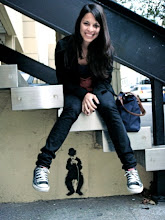
It was interesting to see how Boyle translated and accommodated his style for a children’s film. His signature camera techniques, aesthetics, and story lines were readjusted by changing their degree of intensity. For example, in his previous work, Boyle predominantly used fast editing synchronized with music to create a certain quality of dynamism and surprise as the actions build up towards the climax of the story. However, in Millions, editing was used to extend and emphasize key actions. For instance, when the thief threatens Damian and explains he will call at night to get the money back, the action of opening and closing the phone is repeated five times through the editing. By repeating the same action from different angles, a shot that could last a couple of seconds takes much longer to be completed. This editing technique was also used when the characters played with the money by throwing it into the air. As a result, the amount of money seems substantially greater as well as the joy it generates to its beholders.
In addition to editing as a technique to emphasize important actions, music was key to direct audiences’ attention and feelings. When Damian is in danger or close to the thief, a heavy breathing takes over the soundtrack. Nevertheless, such sound effect looses its initial strength and is stripped off its signaling power because it is heavily used throughout the entire film. Thus, by the end of the film the hunting breathing annoys the audience rather than frightening them. It seems as if Boyle was very conscious of the fact that Millions was meant for a younger audience, and thus he used music and editing techniques to ensure they would not miss important cues of the story. This methodic process, however, places the film on the borderline between succeeding and irritating the audience.
One of the cleverest scenes in Millions is when the nephew of a policeman explains where the money came from. The boy uses toys to relate the story to his peers in the screen as well as in the audience while Boyle crosscuts into real action to expand the story for the adults with an atrophied imagination. The colors in this sequence were corrected and boosted in post-production, creating high contrasts to dramatize the scene and create the right ambiance for the tale. In addition, there is a high synchronization between the toys and the real action which is achieved through fast cutting. Thus, such crosscutting not only allowed for an enhanced illustration of the story, but it also successfully catered to the two diverse generations that compose the audience.
The monologue of Damian at the end of the film seems to be reciting Boyle’s words: “that’s how he would want the story to end, with big piles of stuff. But it’s not his story. It’s mine. This is where I want it to end.” This speaks not only about the story per se, but also about the freedom and power that the person behind the camera has. Even though the audience may have thousands of ideas about how to spend the money, this is Boyle’s story and only he has the power of crafting its ending. In addition, it seems to be a stand against big studios since they are known for imposing positive and happy endings to mainstream films, which might have been the case with The Beach.










































